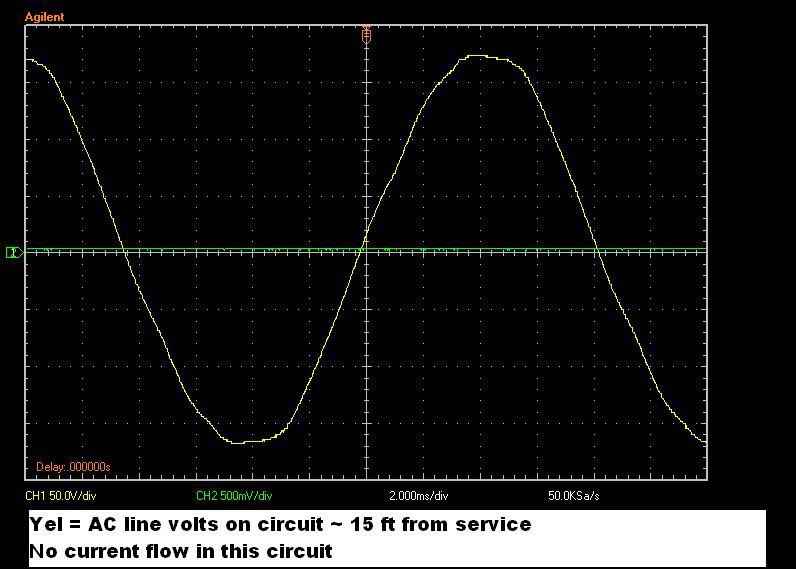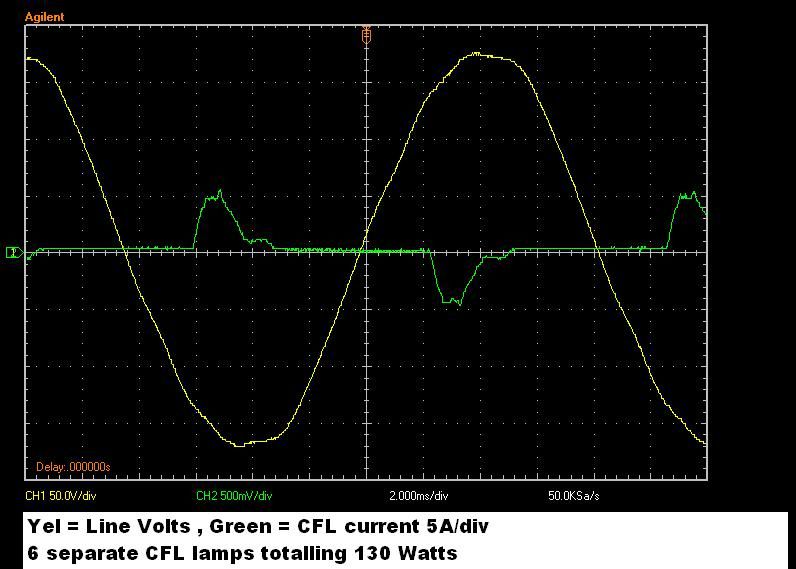gar
Senior Member
- Location
- Ann Arbor, Michigan
- Occupation
- EE
100406-2154 EST
What does your AC line voltage waveform look like?
A member on this forum brought to my attention that his waveform was flattened on the top. He is a long way from me, and therefore not the same power company.
I looked at my waveform and it is similar to his. In years past I have had a very good sine wave.
My conjecture is that there a very large number of loads on the grid that are rectifier capacitor input filter devices, and these could cause this distortion. Does this distortion get back as far as the high voltage transmission lines?
.
What does your AC line voltage waveform look like?
A member on this forum brought to my attention that his waveform was flattened on the top. He is a long way from me, and therefore not the same power company.
I looked at my waveform and it is similar to his. In years past I have had a very good sine wave.
My conjecture is that there a very large number of loads on the grid that are rectifier capacitor input filter devices, and these could cause this distortion. Does this distortion get back as far as the high voltage transmission lines?
.


